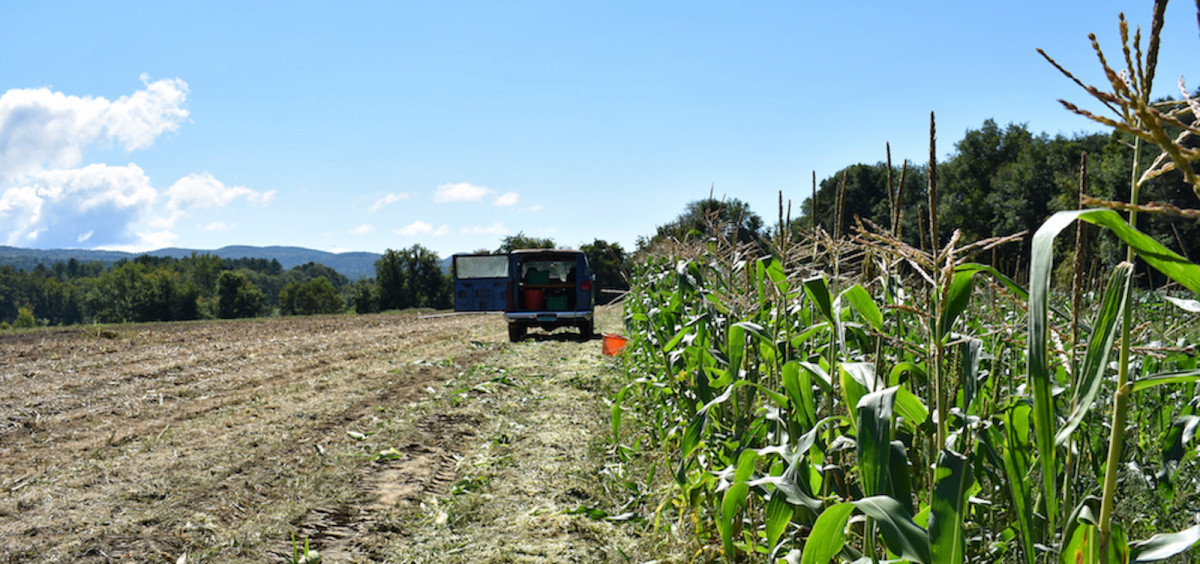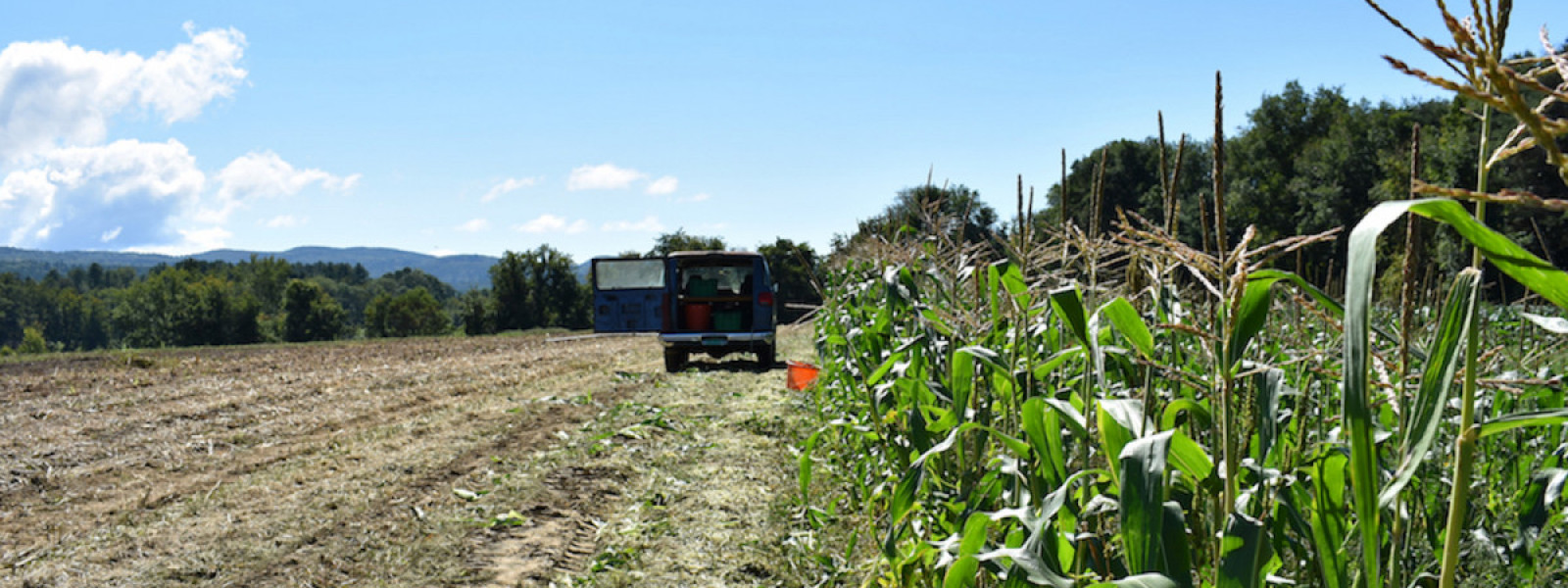Corn Cultivation and our Community
Corn has seen a huge transformation since it was first domesticated from the teosinte plant in Mexico around 10,000 years ago. As a huge staple in our diet and in the diet of the animals we eat, it’s important to consider our relationship to corn and the way we grow and consume it.
There are five types of corn that are grown and eaten: popcorn, flint corn, flour corn, dent (field) corn, and sweet corn. As you may have guessed, the majority of corn grown in the U.S is dent/field corn (around 90 million acres to be exact). Most of this crop is used to feed livestock, then goes towards Ethanol production, and finally human consumption (i.e. corn syrup, corn meal, cereal).
Genetically modified corn has been around since 1997. Around 92% of the corn grown in the U.S in 2016 was genetically modified. These corn strains have been genetically engineered to resist pests and herbicides (specifically glyphosate (Round-Up) herbicide) and drought. Bt corn has been engineered with a protein that is poisonous to pests like the European corn borer and ear worms. Field corn is not the only variety to get the GM treatment. Insect resistant sweet corn is also available.
Corn is heavily reliant on Nitrogen to grow and produce ears. Nitrogen can be applied as a chemical fertilizer on fields or added in the form of cow manure. Runoff from fields puts excess nitrogen into our waterways. This can cause an overgrowth of algae and aquatic plants which results in oxygen depletion.
Over the past century the genetic diversity of vegetables that we grow has shrunk. Selective breeding and the consolidation of seed companies has led to fewer and fewer varieties available in seed catalogs and on store shelves. Varieties that were more palatable were forgone in favor of varieties that stored longer, had more uniformity, and shipped better. Corn was not exempt from this.
The good news is, there are many individuals and farmers seeking to save genetic diversity and grow corn in a way that cares for the land and the end consumer. Take Nando Jaramillo, the owner of Moon and Stars Arepas.The

More than a food business, Moon and Stars Arepas has a social mission and seeks to connect heritage corn, latin american foodways and regenerative agriculture practices to create a self-sustaining local food system. It starts with the Arepa. A native food of Venezuela and Columbia, the Arepa is a thick corn disk that is eaten with toppings like an open faced sandwich. Not to be confused with the tortilla, Arepas are made with nixtamalized corn (corn that has been cooked with wood ash or lime) and then ground into masa (corn flour). Nixtamalization makes corn more easily digestible and nutritious.
In partnership with Cedar Circle Farm, Nando is growing Abenaki Calais Flint corn in a three sisters planting with Walton Butternut squash and Jacob’s Cattle bean. Abenaki Calais flint corn was first grown by the Abenaki people in this region and is also named after Calais, VT. This corn trial will be used to test growing methodologies in the hopes of sharing that knowledge with more farmers.
Here at Cedar Circle Farm we grow Montauk, a hybrid bicolor sweet corn. All varieties of corn are one species, Zea mays. Dominant genes control the starchiness and recessive genes control sweetness and the kernel. Different combinations of these genes produce different types of corn. Sweet corn is produced by bringing forward and combining these recessive genes. Montauk has a combination of sugar enhanced (se) genes and shrunken (sh2) genes to create a synergistic variety that is tender and sweet. As it is grown organically it is good for the planet, our waterways and you!
There is a lot more that can be said on the subject of corn and its relationship to agriculture and our diet. What we here at Cedar Circle Farm and individuals like Nando hope to do is farm in a way that improves the health of the soil, increases the nutrients in our food and supports the community as an interconnected whole.







